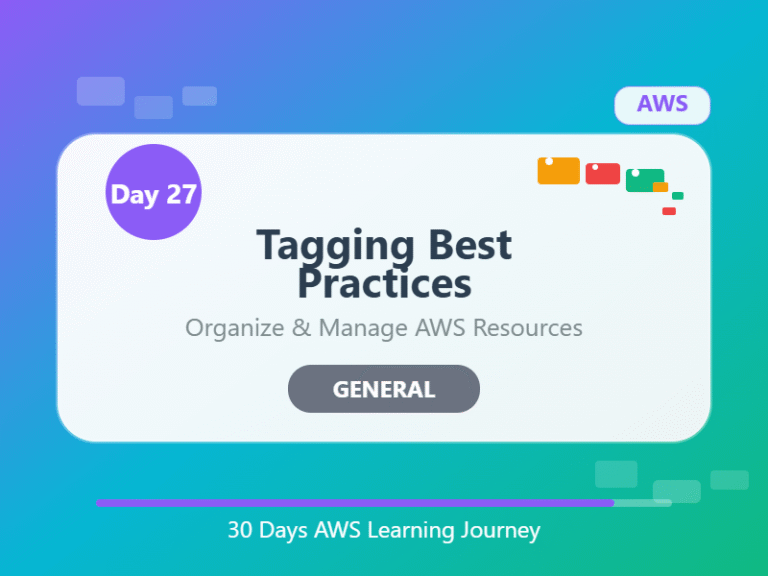🏷️ Day 27: Tagging Best Practices – Stay Organized in the Cloud
Category: General / Cost & Resource Management
Goal: Learn how to organize and manage AWS resources using tags.
🧠 What You’ll Learn Today:
- What are tags in AWS?
- Why tagging is super important
- Best practices to follow
- Real examples of good tagging
🔖 What are Tags in AWS?
Tags are key-value pairs you attach to AWS resources.
Example:

You can tag things like:
- EC2 instances
- S3 buckets
- Lambda functions
- RDS databases
- Load balancers
…and many more.
🎯 Why Use Tags?
✅ Organization
Group your resources by project, team, or environment.
✅ Cost Tracking
Tag by team or client to track costs in billing reports.
✅ Automation
Use tags to auto-start/stop resources with scripts.
✅ Security & Compliance
Mark critical resources with tags for audits or policies.
🧰 Common Tag Keys
| Key | Example Value |
|---|---|
| Environment | Dev / Test / Prod |
| Owner | Alice / DevTeam |
| Project | WebApp / Analytics |
| CostCenter | 1234 / Marketing |
| Application | InventoryService |
| ManagedBy | Terraform / Manual |
💡 Tagging Best Practices
- ✅ Define a Tagging Policy
Decide upfront which tags are required for every resource. - ✅ Be Consistent
Stick to the same tag keys and naming convention. - 🚫 Avoid Freeform Tags
Random or inconsistent tags can cause confusion. - 🔐 Restrict with IAM
Use IAM policies to enforce tagging on resource creation. - 📊 Use Tags in Billing Console
Enable cost allocation tags to track spending. - 🔍 Audit Regularly
Use AWS Config or scripts to find untagged resources.
🧠 End of the Day Notes:
📌 Tags are more than just labels — they’re key to managing, securing, and saving money in AWS.
Start small, but be consistent. You’ll thank yourself later.
🔁 Navigate the Series:
⬅️ Day 26: Shared Responsibility Model – Who Secures What?
➡️ Day 28: Project – Deploy a 3-Tier Web App on AWS


